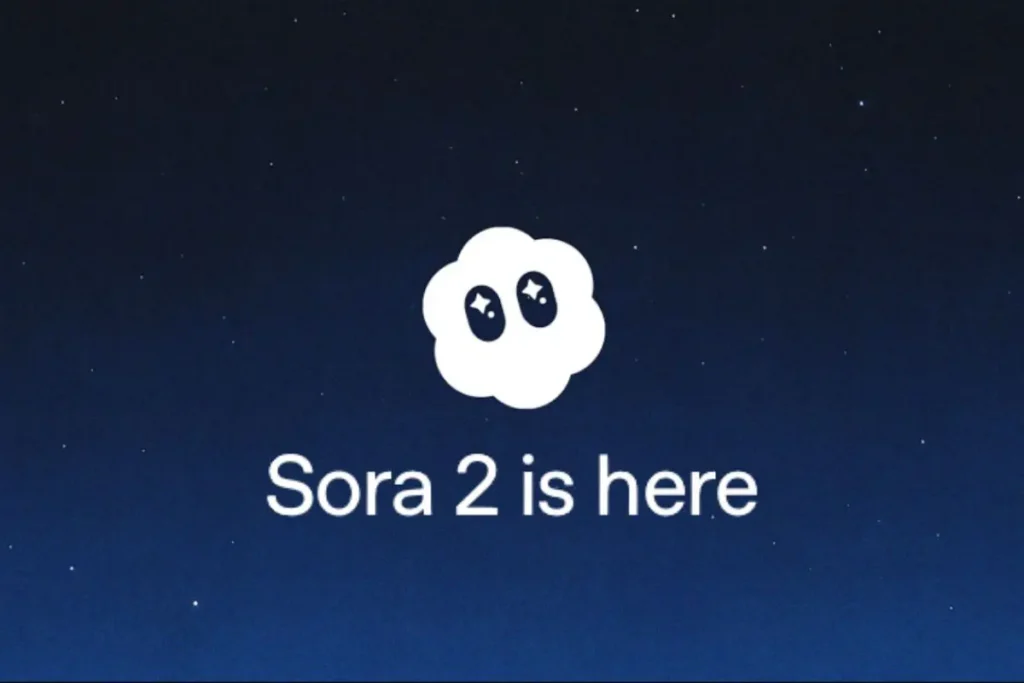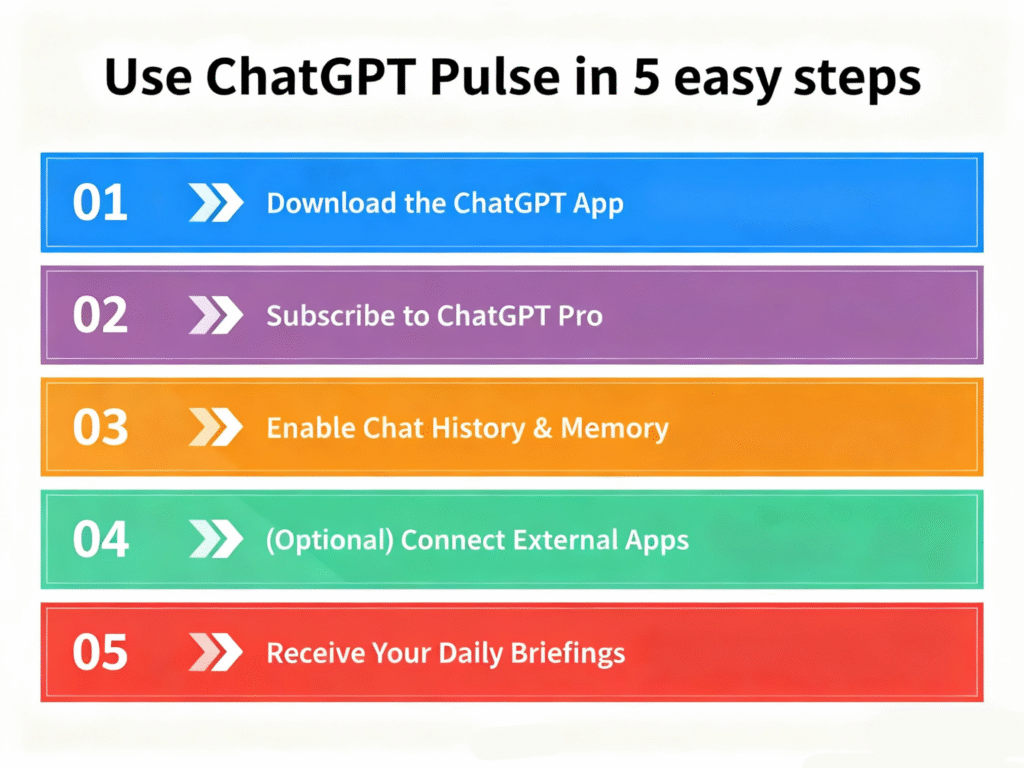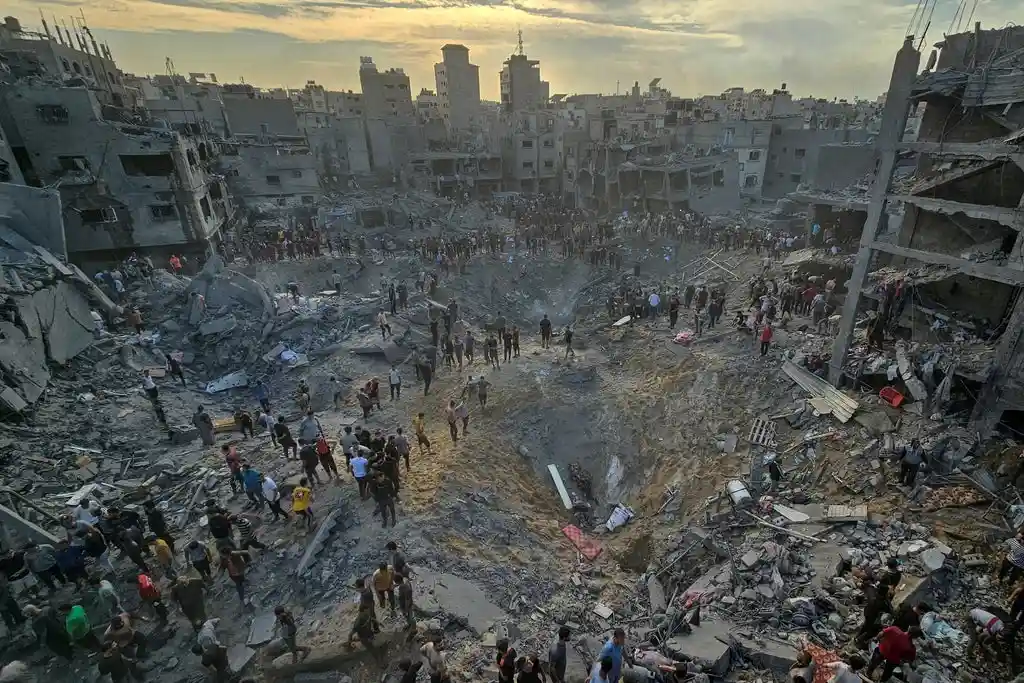
I. Headlines Spark Global Anxiety — But Few Truly Understand the Bigger Picture
News platforms have been buzzing with escalating scenarios:
- The Israel-Iran conflict in 2024 reached new levels of volatility, with threats of pre-emptive strikes and nuclear retaliation being discussed openly.
- U.S. officials warn of “unprecedented danger” as they prepare contingency plans for a wider Middle East war.
- Russia, still entrenched in its prolonged standoff with NATO, continues joint drills with China near disputed waters.
- Global supply chains, already stretched thin, are facing renewed pressure from sanctions, cyberattacks, and resource nationalization.
World War 3—once a distant, doomsday fantasy—is now a serious point of global concern. From Reddit to Reuters, headlines are sounding the alarm: rising nuclear threats, direct warnings from U.S. intelligence officials, and rapidly escalating flashpoints in the Middle East, Eastern Europe, and the Indo-Pacific. One recent U.S. report called this “the most perilous moment in modern history.”
Israel’s potential strike on Iran, Iran’s retaliatory posture, Russia’s prolonged assault on Ukraine, NATO’s eastern shift, and tensions in the Taiwan Strait are no longer isolated crises—they’re interconnected pressure points on a fragile geopolitical system. With each passing week, the pieces on the chessboard move closer to a wider, more devastating confrontation.
And yet, for most of us, trying to understand what’s really happening is overwhelming. News is everywhere but insight is scarce. Timelines are jumbled, narratives clash, and social media floods us with half-baked opinions. As a result, many feel anxious, but uninformed.
As someone passionate about international relations and conflict analysis, I’ve spent countless hours trying to make sense of this chaos. Eventually, I realized: traditional news reading wasn’t enough. I needed a structured, intelligent way to cut through the overload—and that’s where a new AI assistant – iWeaver stepped in.
II. How I Used iWeaver to Decode ww3?
▶ Feature 1: Smart Conflict Timeline (AI Mind Mapping)
When I first searched the term “World War 3” and my information within the system, what I received was something far more illuminating:
- A chronological map of critical flashpoints across the past three years, from Russia’s full-scale invasion of Ukraine to the 2025 G7 emergency session on Iran.
- Five pivotal geopolitical turning points were highlighted—shifts in energy policy, military doctrine, and global alliances that had quietly reshaped the balance of power.
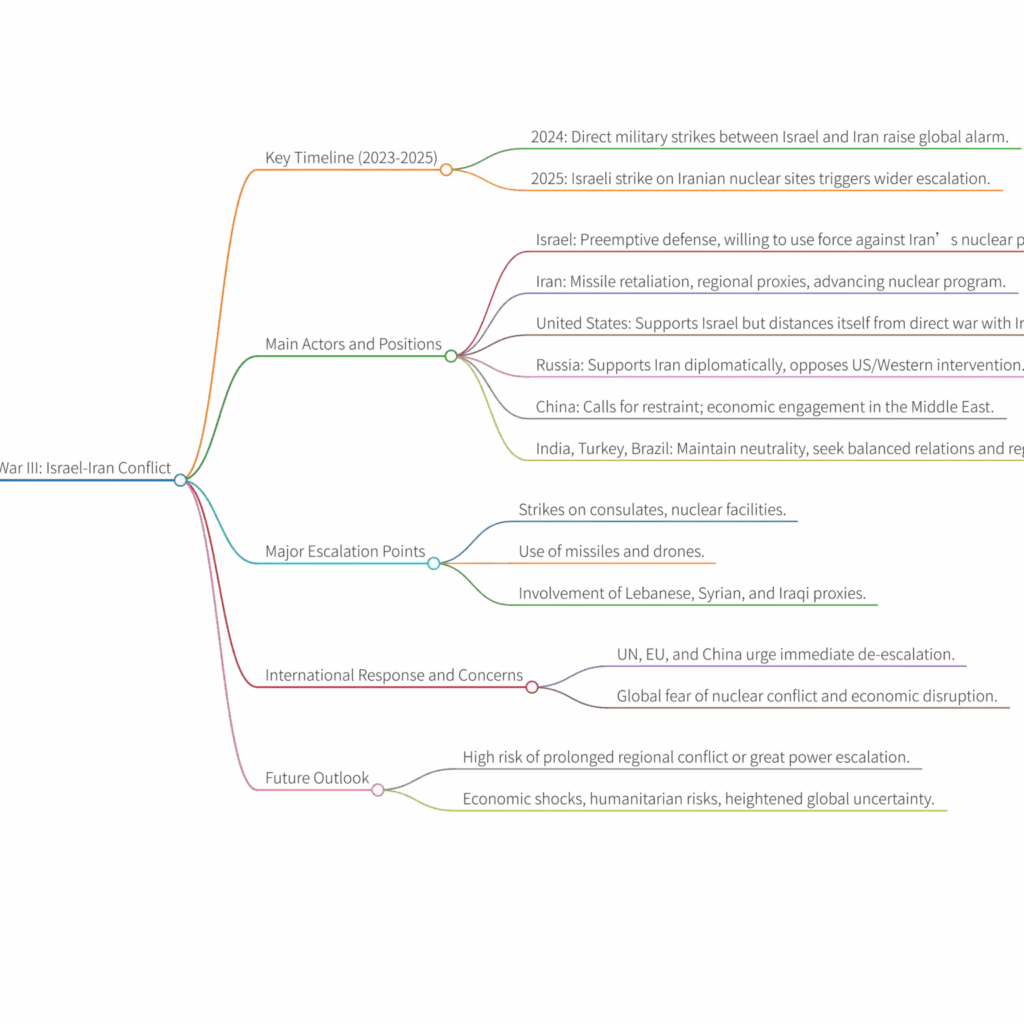
This wasn’t just a timeline. It was a living model of global tensions—where each node represented not just a date, but a decision with cascading effects.
▶ Feature 2: Visual Conflict Relationship Mapping
From there, I wanted to understand the underlying structure: Who is aligned with whom? What pressure points exist beneath the headlines?
Within seconds, I was looking at:
- A relationship graph mapping the spheres of influence—China, the U.S., Russia, and how states like India, Turkey, and Brazil operate between them.
- A supply chain impact flow, where I could trace how oil embargoes affect chip manufacturing, which in turn alters global grain trade.
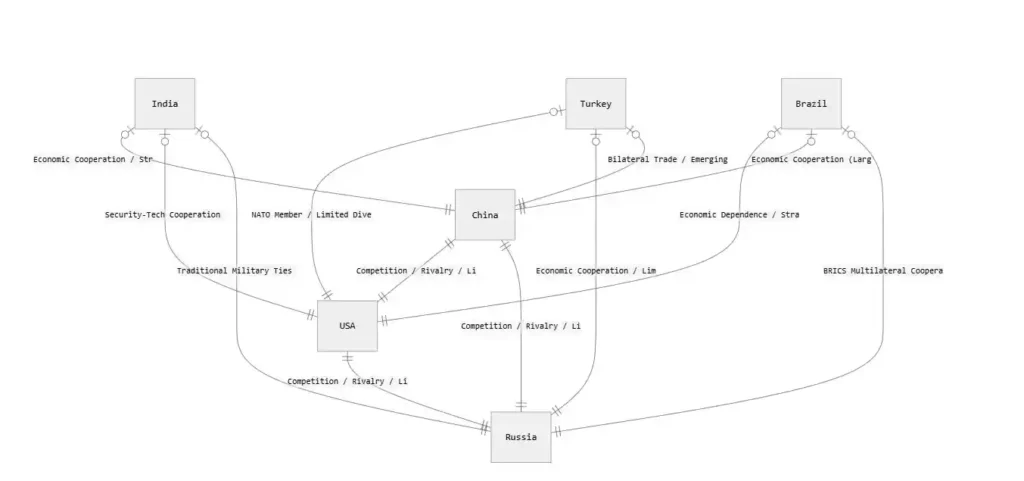
These weren’t abstract charts—they were tangible visualizations of modern warfare and influence.
▶ Feature 3: Deep-Dive AI Dialogue (Ask Anything, Contextually)
Having processed the data visually and chronologically, I still had questions. Serious ones.
“Would an Israeli strike on Iran draw in NATO?”
“Could China use the Middle East chaos to expand its influence?”
“Are current U.S. deterrence policies actually credible?”
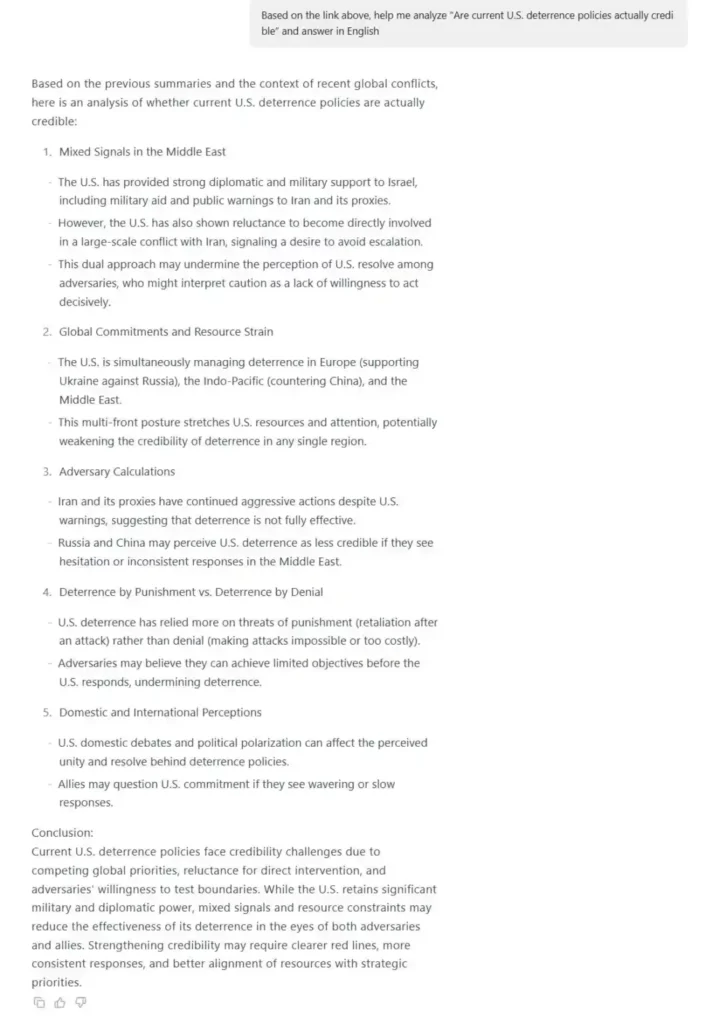
Instead of falling into a rabbit hole of search results, I posed these questions directly to the AI—now familiar with the same dataset I had been analyzing.
What came back was not just answers, but analytical responses: nuanced, sourced, and positioned within the broader geopolitical narrative.
▶ Feature 4: Instant Report Generator (Tailored Output in Seconds)
The final step was turning this insight into a deliverable. Whether you’re a student, a journalist, or just someone trying to explain current events to others, the ability to condense analysis into a clear report is priceless.
With one click, I generated a framework in seconds.
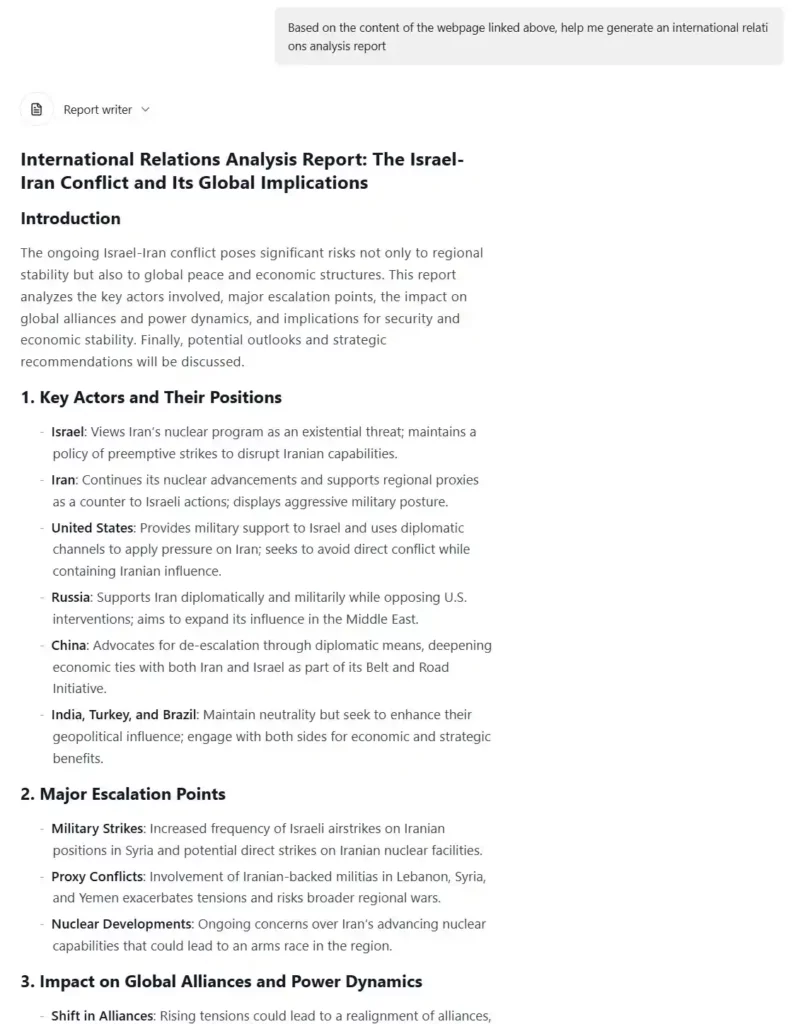
From there, I could select where to apply? Whether Academic Mode or Public Explainer, iWeaver will give you different article styles based on your requirements. A comprehensive report, built on real-time data and customizable in tone and depth.
III. Why This Matters — And What Sets It Apart
Most attempts to understand complex international issues suffer from two key problems:
- Time cost — Reading hundreds of articles, tracking events manually, and connecting the dots by hand.
- Lack of structure — Fragmented facts without a framework.
Let’s compare:
| Method | Time | Depth | Clarity |
|---|---|---|---|
| Manual Research | days | Inconsistent | Fragmented |
| Basic News Aggregators | hours | Shallow | Low |
| AI-Assisted Analysis | 10 min | High | Structured |
What makes this particular AI system different from other tools I’ve used is how it learns and adapts:
- It remembers my previous queries, forming a personal knowledge base.
- It allows me to upload my own documents or PDFs, and then analyze or question them directly.
- It integrates visual thinking, natural language responses, and academic-level synthesis—in one unified space.
IV. Final Thoughts — Turning Fragmented Information into Your Own Knowledge System
In today’s information environment, we’re not lacking data or opinions—we’re lacking a structured way of understanding. Over the past year, global political, military, and economic instability has heightened fears and confusion about where the world is heading. But this complexity isn’t limited to headlines about war.
Energy policy, tech competition, global finance, climate conflict, supply chain shifts, AI governance, regional elections…
These seemingly unrelated events are all part of an interconnected global system, where causes and consequences ripple across borders. iWeaver is designed precisely to help us decode this complexity—by turning isolated facts into integrated knowledge.
From personal experience, I’ve seen that iWeaver isn’t just a tool for conflict analysis. It has broad, transformative potential across many domains:
- Academic researchers can use it to trace theoretical developments, organize citations, and build structured research frameworks.
- Business professionals can track market trends, policy shifts, and supply chain dynamics—then instantly generate strategy briefs.
- Public policy analysts can model legislative impacts, stakeholder dynamics, and multi-layered geopolitical consequences.
- Crisis response teams can simulate scenarios and communication flows during unfolding emergencies.
- Media creators can turn complex stories into visual, engaging narratives using timeline maps and influence diagrams.
- Educators and students can translate abstract subjects into visually structured learning tools, reports, and presentations.
iWeaver isn’t here to replace your instincts or your curiosity—it’s here to amplify your clarity. It learns from your inputs—documents, notes, questions—and gradually builds a personalized knowledge graph. It doesn’t box you into conclusions. Instead, it opens up pathways for deep, multidimensional insight.
In this fast-changing world, what we need isn’t just more information—we need better cognitive tools. True understanding comes not from passively consuming facts, but from actively organizing, analyzing, and expressing them.
iWeaver helps you turn chaos into coherence—giving you the structure, logic, and perspective to see the bigger picture. That’s its greatest value, and ultimately, your greatest strength.
So whether your focus is geopolitics or AI ethics, climate change or business strategy, academic research or media analysis—
you owe it to yourself to try iWeaver. Make sense of complexity. Stay ahead of your time.


